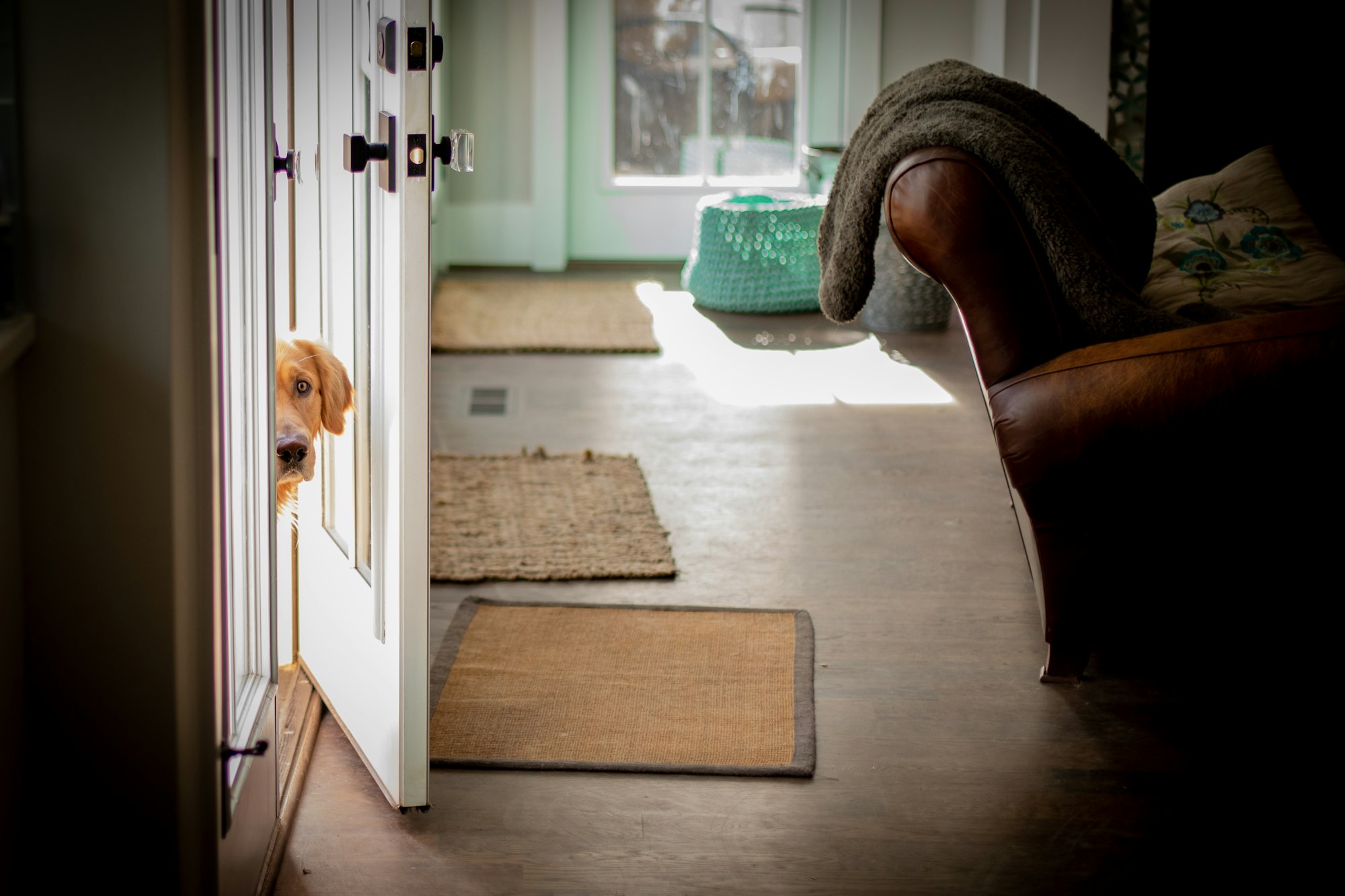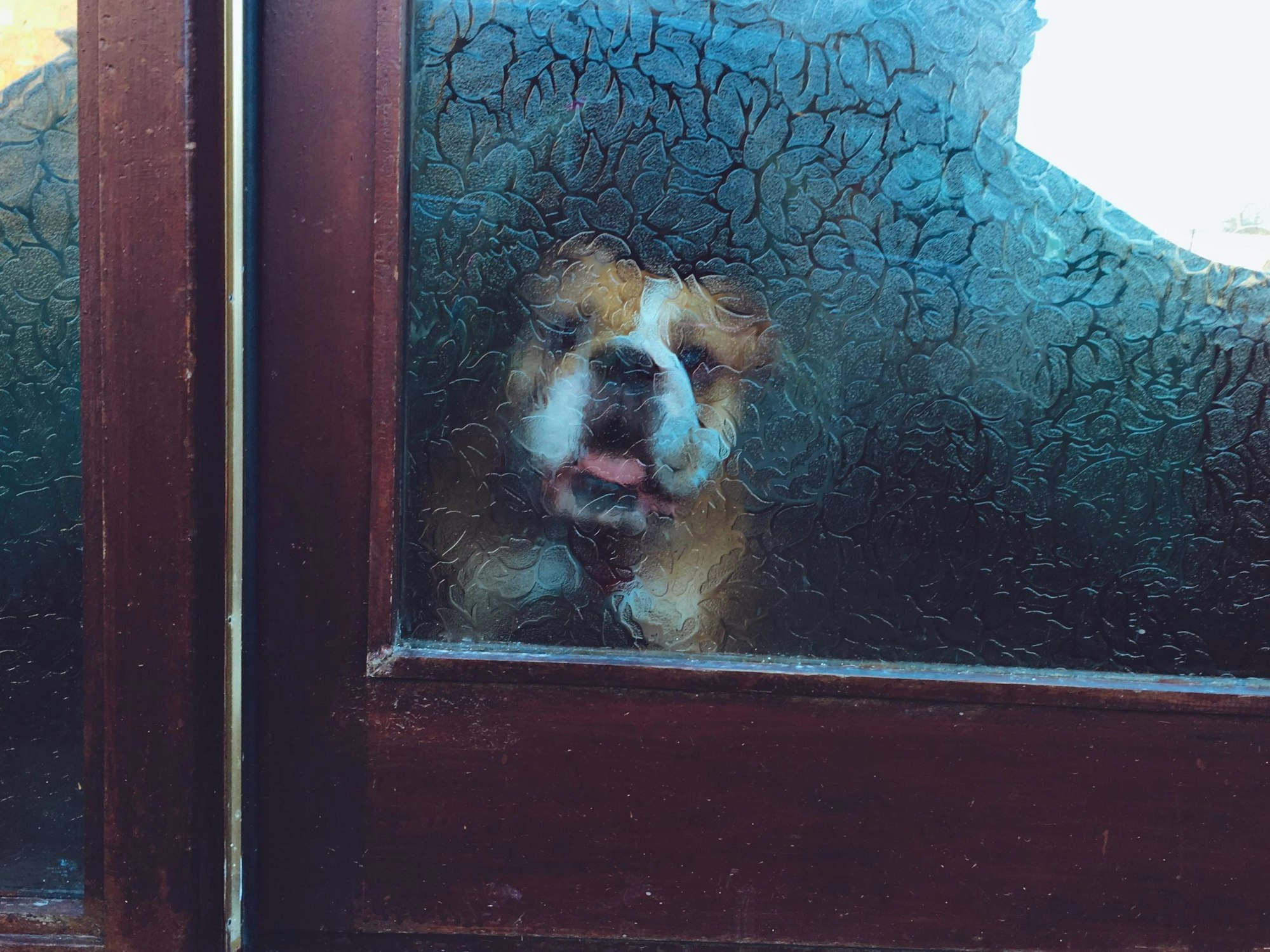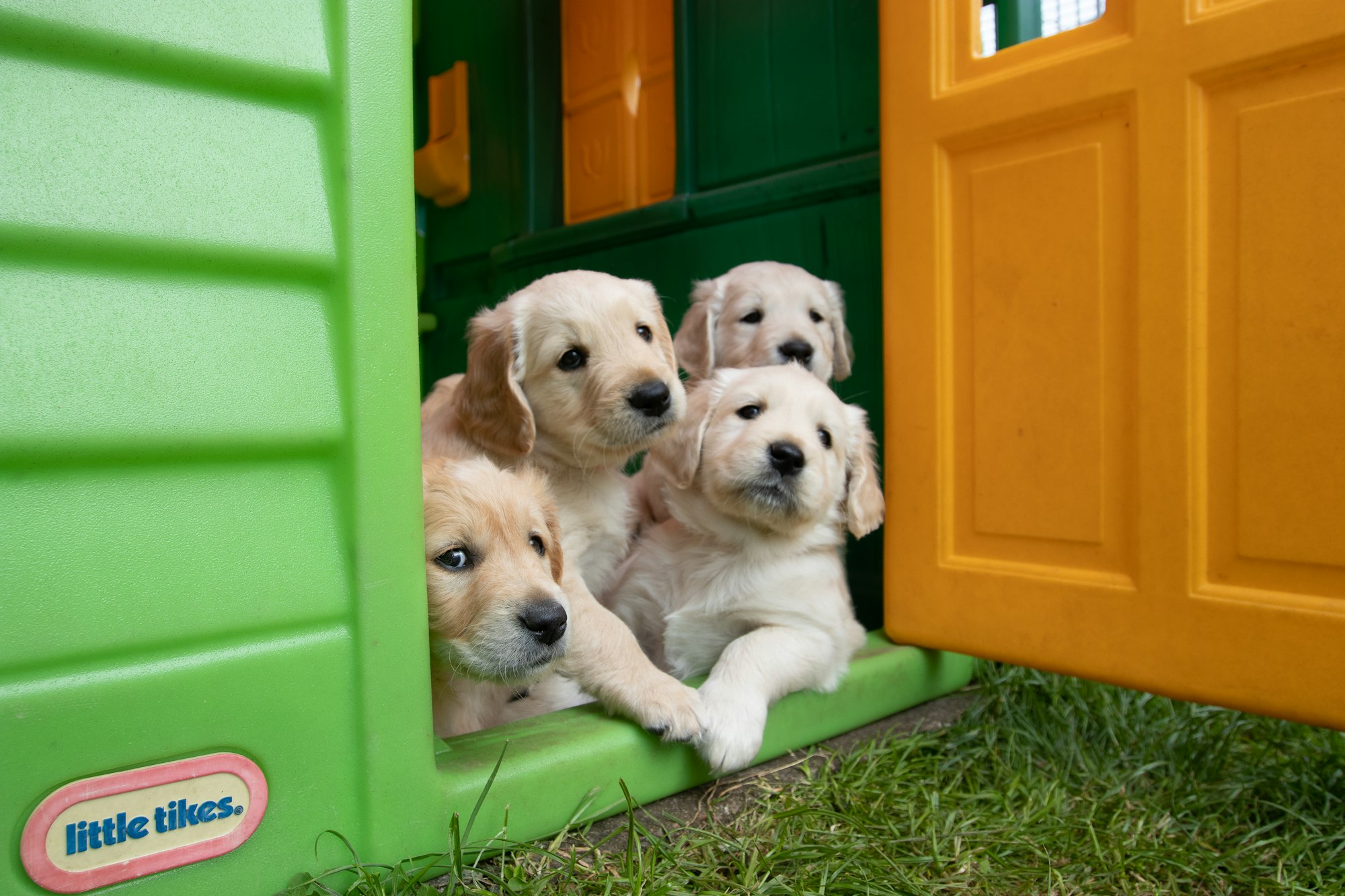There's a chill in the air, and as you open the door to fetch your newspaper, your furry friend spots an opportunity. With a gleam in his eye and a spring in his step, he dashes out the door, leaving you startled and worried.
Does this sound familiar? If it does, you're dealing with a common issue known as 'dog door darting'. But fear not, we've got you covered. This article delves deep into understanding and preventing this behavior.
Why Does Your Dog Dart Out the Door?
To effectively tackle the issue, it's crucial to first understand the cause. For dogs, the world outside is full of fascinating sights, sounds, and smells. It's a virtual playground for their senses, and sometimes the temptation to explore is just too hard to resist.
Dog Door Darting Prevention
Preventing this behavior starts with training. Much like humans, dogs learn through a mix of instruction, reward, and reinforcement. We'll explore some effective strategies in the sections below.
Building the Basics: Training Your Dog
It's best to start training at a young age. As soon as your puppy starts responding to basic commands like 'sit' or 'stay', you can gradually introduce door-specific instructions.
Here are some Dog Door Training Tips that you can start with:
- Door Manners: Teach your dog to 'sit' and 'wait' whenever the door is opened. Reward them with treats or praises when they obey, and repeat until it becomes a habit.
- Focus Training: Use commands like 'look at me' to keep your dog's attention on you, especially during distractions like door openings.
- Recall Commands: In case your dog does manage to escape, having a strong recall command can ensure they return to you safely.
Remember, training isn't an overnight process. It requires patience, consistency, and positive reinforcement.

Advanced Techniques: How to Train Your Dog to Stay Inside
Once your dog has mastered the basics, you can begin more advanced training. This includes desensitizing them to triggers that typically prompt door-darting and teaching them to associate staying inside with rewards.
- Desensitization: Gradually expose your dog to the triggers that make them want to bolt. It could be the sound of the doorbell or the sight of an open door. Start slowly, rewarding them for staying calm.
- Reward Staying Inside: Create a positive association with staying indoors. Offer them their favorite treats, toys, or playtime whenever they resist the urge to dash outside.
From Prevention to Safety: Keeping the Escape Routes in Check
Preventing Dogs from Escaping isn't just about training; it's about making your home a safer place for your pet. Here are some practical measures you can implement:
- Secure Your Doors: Install child-proof locks or gate barriers at your main doors to prevent accidental escapes.
- Fenced Yard: If you have a yard, make sure it's securely fenced. Dogs are great diggers, so the fence should be buried a few feet underground.
- Leash Them When Necessary: If you're expecting a lot of in-and-out traffic at your door, it might be best to leash your dog or keep them in a separate room for the time being.
Reinforcement: The Key to Success
The road to preventing your dog from door-darting is not always a smooth one. There will be setbacks, but it's important to remain consistent in your training.
One of the most effective ways to cement good behavior is through reinforcement. This doesn't always mean treats – though they can be a great motivator! Positive reinforcement can come in many forms: verbal praise, a favorite toy, or even a belly rub. The idea is to let your dog know they did a good job.
Consistency is key here. Make sure you're rewarding your dog immediately after they show the desired behavior, such as sitting and waiting at the door. This helps your dog understand what action is earning them a reward.
Common Mistakes to Avoid
Training your dog not to dart out the door can be a daunting task, and it's easy to make mistakes along the way. Here are a few common pitfalls to avoid:
- Inconsistent Training: Dogs learn through repetition. Stick to the training plan and make sure everyone in your household is on the same page.
- Negative Reinforcement: Scolding or punishing your dog for darting out the door can cause fear and confusion. Stick to positive reinforcement methods.
- Setting Unrealistic Expectations: Changing behavior takes time. Celebrate small victories and be patient with your dog's progress.
Creating a Dog-Friendly Environment
While you work on your dog's door manners, take a step back and consider the home environment. Making your home more entertaining for your dog can reduce their desire to explore outside. Interactive toys, puzzle feeders, and plenty of playtime can keep your dog happily occupied indoors. Remember, a bored dog is more likely to find mischief at the door!

Building a Strong Bond: Understanding and Trust
At the heart of all this training is the bond between you and your dog. Each training session is an opportunity to understand your dog better and strengthen your relationship.
Your dog needs to trust that you'll take care of their needs and provide them with plenty of fun and stimulation. Over time, as this bond strengthens, your dog will feel less need to seek out adventure on the other side of the door.
Embracing the Journey: Every Dog is Unique
Finally, remember that every dog is unique. What works for one may not work for another. It's crucial to understand your dog's personality and adapt your training accordingly.
Whether your dog is a young pup full of energy or an older dog set in their ways, with patience, persistence, and a lot of love, you can help your furry friend see that the safest and most rewarding place to be is right by your side.
Remember, the journey to Stop Dog from Running Out the Door can be as rewarding for you as it is for them. It's an opportunity to understand your furry companion better, strengthen your bond, and ensure they are safe and content.
The Role of Distractions in Training
An often overlooked yet critical element of door-darting prevention is mastering distractions. Your dog's desire to dart out the door is often triggered by external stimuli – the mailman, a squirrel, or simply the exciting scents of the outdoors.
When training your dog to resist these tempters, start in a quiet, distraction-free environment. Gradually introduce distractions, rewarding your dog each time they maintain focus and ignore the disturbance. This will help them learn to stay calm and obedient, even in stimulating situations.
Seeking Professional Help: Dog Trainers and Behaviorists
If you've tried everything and your dog still darts out the door, don't despair. It might be time to seek professional help. A professional dog trainer or a certified animal behaviorist can provide personalized training strategies. They bring expertise and experience in dealing with such issues and can often bring about significant improvements.
Tech Can Be Your Best Friend
Modern technology can be a great ally in your quest to stop your dog from door-darting. Devices like microchip pet doors can be programmed to open only for your dog, preventing them from darting out when you're not around. GPS trackers attached to your dog's collar can help locate them quickly if they do manage to escape.
The Power of Exercise and Mental Stimulation
A dog that gets plenty of physical exercise and mental stimulation is less likely to seek adventure outside. Regular walks, playtime, and interactive toys can help keep your dog content and less interested in what's on the other side of the door.
Preparing for the Worst: Safety Measures
Even with the best training, there might be times when your dog does escape. Make sure they're wearing a collar with an ID tag that includes your contact information. Microchipping your dog can also be an added layer of security.

Harnessing Technology: Introducing Fi Dog Collars
As we journey through the process of training our dogs not to dart out the door, we should remember that we are living in a technologically advanced era. Today, innovative companies are designing products that not only make our lives easier but also make our pets' lives safer. One such product is the Fi Dog Collar.
Fi Dog Collars are smart collars designed to keep your furry friend safe and healthy. But how does this technology aid in our quest to stop our dogs from darting out the door?
GPS Tracking: Fi's Solution to Door Darting
Despite our best efforts, there might be times when your dog manages to escape. This is where Fi steps in. Equipped with GPS tracking technology, the Fi collar can track your dog’s location in real-time, providing you with peace of mind and an added layer of security.
If your dog does manage to sneak out, you can quickly locate them using the Fi mobile app, drastically reducing the time your pet spends exposed to potential dangers.
Keeping Up with Their Health: Fi's Activity Monitoring
The Fi Dog Collar does more than track your pet's location. It also monitors their activity levels, similar to a Fitbit for humans. This feature can be an excellent tool in curbing door darting behavior.
Remember, a well-exercised dog is less likely to seek out additional stimulation by running out the door. By monitoring your dog's daily activity levels, you can ensure they're getting enough exercise to keep them content and less prone to escapades.
Escape Detection: Fi's Proactive Approach
One of Fi's standout features is its escape detection notifications. The system can send an alert to your phone the moment your dog leaves a designated safe area, like your home. This early warning system can give you valuable time to react and ensure your furry friend doesn't wander too far.
Strengthening the Bond: You, Your Dog, and Fi
Training your dog not to dart out the door can be challenging, but with patience, understanding, love, and the right tools like the Fi Dog Collar, you can create a safe environment for your pet.
Remember, at the end of the day, it's not just about keeping your dog from running out the door. It's about understanding their needs, strengthening your bond with them, and ensuring they're as happy and secure as possible. With the help of Fi, this becomes an easier, less stressful process.
Incorporating modern technology into your training regimen not only offers practical solutions but also symbolizes the lengths to which we go to ensure our furry friends are safe and happy. The journey may be challenging, but with tools like Fi Dog Collar, it is a little easier, a little safer, and a lot more secure. Here's to safer adventures and happier homes with our furry friends!
Conclusion:
In conclusion, preventing a dog from darting out the door is a multifaceted process that involves understanding your dog's behavior, consistent training, positive reinforcement, managing distractions, and providing adequate physical and mental stimulation. Each dog is unique, so patience and persistence are crucial, and celebrating small victories along the way is essential.
The home environment plays a significant role too, ensuring it's engaging and entertaining reduces the dog's desire to explore outdoors. Building a strong bond based on trust and understanding is pivotal in this process, and with time, your dog will feel less need to seek adventures beyond the door.
Incorporating modern technology like the Fi Dog Collar can be a game-changer, with features like GPS tracking, activity monitoring, and escape detection, providing an added layer of security.
Finally, even though the journey to train your dog to resist the lure of the open door can be challenging, the rewards of a safer, happier pet and a stronger bond between you and your furry friend are worth the effort. Remember, your commitment, consistency, and love are the keys to ensuring your pet's safety and happiness.

